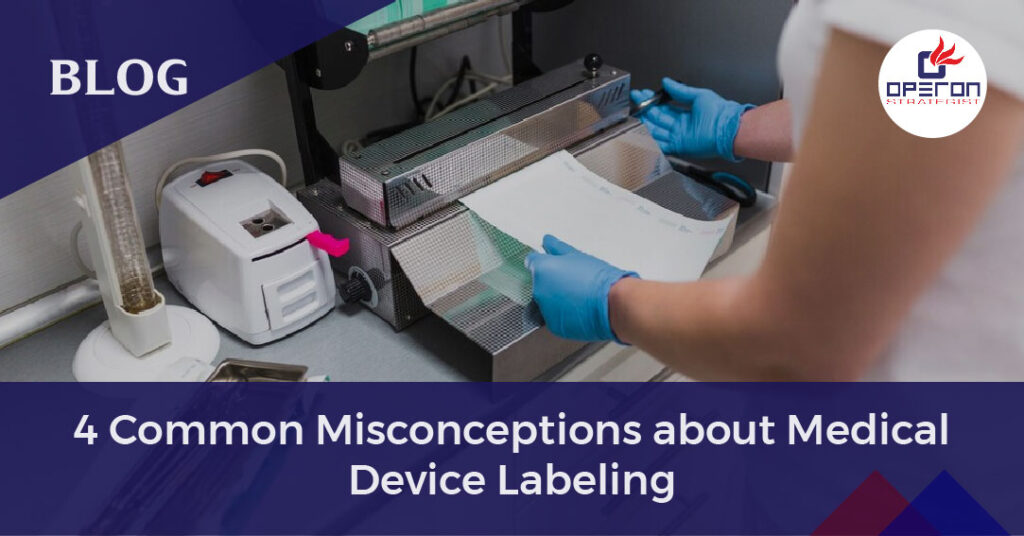Labeling Refers to All of the Information Provided With the Equipment. Which Includes:
- Symbols, labels, instructions, warnings, and control labels are applied to medical devices using color coding, molding, machining, or printing.
- The information appears on the medical equipment. The device came with installation, user manuals, and maintenance instructions.
- Details are printed on the device package
- Medical device labels are used in all jurisdictions.
The following are three common jurisdictions, along with the appropriate requirements:
- Canada: Canadian Medical Device Regulations Clause 21
- EU: Medical Device Directive Annex 1, clause 13
- USA: FDA CFR 21 Part 801
Looking For a Medical Device Regulatory Consultant?
Let’s have a word about your next project
US FDA 21 CFR 820.30 Design Control Consultant For Medical Devices:
According to statistics, despite representing 5% of the world’s population. The United States creates more waste than any other country in the world. That waste occasionally extends into medical techniques and technology designed to improve our patient’s health. Not every item or product labeled “single-use” is only useful once. So many can be reused and repossessed.
There are objects in medical practice that are intended to be used only once; nonetheless, there is a significant benefit to reprocessing certain medical devices labeled as use once devices.
Medical Device Labeling Has 4 Common Misconceptions As Follows:
- Medical device labeling is just the label on the device.
Before proceeding, it is critical to address a major misconception. Most people believe that medical device labeling is simply the label on the device. When we say the label(s), we are referring to the device labels found on the box or bag. They ignore IFU (information for use). According to FDA labeling, medical device information includes the label, directions for use, technical description, intended purpose, and proper use (excluding shipping documentation).
Well, medical device labeling is incredibly vital; it is not something that should be done at the end of the project. So you can do it in between since it is not an issue of repeating what the other person has done.
- You can essentially duplicate the predicted device labeling.
When presenting a 510(k), we believe that our device should closely cooperate with the predicate device. The vast majority believe this means they can take the predicate device marking, swap in their device name, and call it good. Unfortunately, it is really difficult. When planning your device branding, you can start with the predicate device name. It will provide you with a good starting point for what warnings and alerts you may need to include. In any case, you cannot stop there. Your marking is part of your outline yields and should be handled properly. You should also verify that your mark is linked to your risk management strategy. If you have identified harmful situations or damages that are not mentioned in the predicate name, you must consider including them in yours. Sometimes the predicate device was created a long time before your device, and new information concerning hazardous conditions and damages may be available. Concerning the remainder of the name, notably the IFU, do not assume that you can simply replace the facts on the most effective way to use the preceding gadget with how to use yours. You must ensure that you are consistent in your assessment of how easy it is to read and obtain the IFU.
- The quality isn’t as good as advertised.
The FDA manages reprocessing, as it does for new devices, with the requirement that reprocessed devices be clean, sterile, and as safe and viable as when they were new. Indeed, reprocessors must adhere to far stricter models than original equipment manufacturers. They should submit 510(k)s and obtain FDA clearance for all devices. They are also evaluated by the FDA considerably more frequently than the original manufacturer.
Each gadget is thoroughly evaluated for the reprocessing bid. Most SUDs can be reprocessed multiple times, depending on their development, material synthesis, and care. A small-scale carving procedure follows the reprocessing cycles of the gadgets. When a device has completed its reprocessing lifetime, it will be removed from the cycle and eventually disposed of. Regardless of whether it has a reasonable life expectancy if a device cannot be properly cleaned, sterilized, or guaranteed to be nearly identical to another device, it will not be reprocessed. For example, class III implanted devices such as pacemakers and replacement heart valves are not recycled. Because of these extensive capabilities, the quality of a reprocessed gadget is comparable to or even superior to that of a brand-new device. Truth be told, a Midwest medical procedure center conducted visually impaired research combining reprocessed and new watchful instruments for their approaches, and the specialists were unable to distinguish.
- The Address Mentioned On The Labeling Is Exactly Where The Medical Device Is Made
This is one of many people’s final misconceptions: the address listed on the medical device labeling is where the gadget is made. Nowadays, an increasing number of products are created by contract manufacturers in various locations. With all of the locations involved, which location appears on the medical device labeling is entirely dependent on where you plan to market your item. According to 21 CFR part 801.1, the FDA requires that the label “indicate conspicuously the location and name of the business of the product manufacturer, distributor, or packer.” And if the gadget is not created by the person whose place and name are given on the label, the place and name should be mentioned because it exposes a person’s relationship with a product Manufactured means that the firm address must be mentioned on the label.
So, what about the rest of the world?
If you purchased a gadget offered in the EU or another nation, your device label may have multiple addresses. The MDD requires the address and name of the product’s maker, as well as the address and name of an authorized salesperson.
Medical device labeling requirements
Manufacturers of electronic equipment covered by a specific standard must include the following information on a label or tag permanently attached to the product. The information listed below should be available once the price has been paid in full.
The manufacturer’s full name and address
The product should include the name and address of the product’s manufacturer or company. Abbreviations such as Inc., Co., or the initials of the person’s middle and first names can be used.
The month, year, and location of manufacture
The manufacturer’s location should be revealed in a code, which was previously submitted to the Director. The year or month of manufacturing cannot be truncated.
Medical Label Symbols:
The Importance of Medical Device Labeling
Because of the risks of misbranding and the accompanying recalls of such medical devices, producers must use proper labeling. Because the FDA has laws and regulations governing what may and cannot be included, manufacturers must grasp what and how to include it. Likewise, kids must understand what cannot be included.
General information concerning labeling
FDR 21 code 801 governs the specifications for what should or should not be included in labeling. You are aware that the medical equipment’s labeling is attached to or contained within the device. The medical device labeling should include a broad explanation, a display panel, troubleshooting instructions, and some other information. The location and name of the corporation or business should also be provided.
You should now understand all four myths concerning medical device labeling. As you now understand, medical device labeling is more than just labeling anything on a medical device, thus you should not copy the medical device labeling, and the addresses on the medical device labeling are entirely dependent on where the product was brought to sell.
Operon Strategist, the leading consultancy in the medical device business, specializes in 21 CFR 820.30 design controls. Our team has vast experience with implementing and optimizing design control processes. Whether you’re establishing new processes or upgrading current ones, we provide bespoke solutions to efficiently satisfy regulatory standards. Contact us today to learn more about how we can help with your project.
- adminhttps://operonstrategist.com/author/admin-2/
- adminhttps://operonstrategist.com/author/admin-2/
- adminhttps://operonstrategist.com/author/admin-2/
- adminhttps://operonstrategist.com/author/admin-2/



